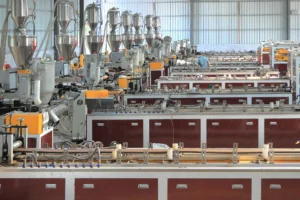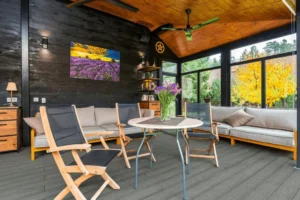Interface Modification Technology for Wood-Plastic Composites
In recent years, there has been increasing research focused on the interface modification of wood-plastic composites (WPC), which has become a key area of interest in the field. Despite significant progress by domestic and international researchers, challenges remain, including research bottlenecks, such as the diversity of additives, the large quantities required, high production costs, complex processes, and the potential negative impact on material properties and appearance.
To address these issues, it is essential to develop new “compatibilizer-coupling agent” hybrid additives with both compatibilizing and coupling properties, aimed at improving the interface performance between wood materials and polymers. This approach can help to enhance the overall performance of WPC. Additionally, innovations in material processing methods, such as processing wood materials into nano-scale components, and utilizing non-polar substances compatible with polymers as reinforcement, are being explored. The use of fibers or fabrics with better connectivity as reinforcing materials for resins, and directly grafting cellulose fibers onto polymer surfaces via specific additives, are also potential solutions. Solving these challenges is not a matter of simply introducing a new additive or processing equipment, but rather requires an integrated, systematic approach to modify the materials, enhance performance, and achieve industrial-scale production of high-performance, high-value, and eco-friendly WPC.

Key Methods for Interface Modification
1. Compatibilizer Molecules
Compatibilizers are amphiphilic molecules that can interact with both non-polar polyolefin polymers and polar wood materials. They typically form hydrogen bonds or dipole-dipole interactions with the wood molecules, enhancing the compatibility between the two phases and improving the dispersion of wood fibers in the polymer matrix. This reduces the interfacial energy, increases the interfacial strength, and improves the mechanical properties of WPC. Common compatibilizers include:
– Ethylene-Vinyl Acetate Copolymer
– Acrylonitrile-Butadiene-Styrene Copolymer
– Maleic Anhydride-Grafted Polyolefins
2. Coupling Agents
Coupling agents help form an interfacial layer between the wood material and the polymer matrix, which acts as a stress transfer layer, enhancing the adhesion strength between the wood and the resin. This significantly improves the overall performance of the composite material. Common coupling agents include:
– Silane Coupling Agents
– Titanate Coupling Agents
– Aluminate Coupling Agents
3. Physical and Chemical Surface Modification
Modifying the surface of wood materials through physical or chemical methods (such as non-polar modification) or modifying plastics to increase polarity (polar modification) can reduce the polarity difference between the two materials, thereby improving interface compatibility. Some common modification methods include:
– Acylation Treatment
– Graft Copolymerization
Solution Strategies for WPC Interface Modification
To enhance WPC performance, these methods can be combined with various additive strategies:
1. Development of Hybrid Additives
By creating new hybrid additives with both compatibilizing and coupling functionalities, researchers can address the issue of poor interfacial compatibility between wood fibers and polymers. This dual-functionality approach can lead to better dispersion, improved mechanical properties, and enhanced overall performance.
2. Nanomaterial Processing
Processing wood materials into nano-scale components helps improve the interaction between the wood and the polymer, as nano-sized particles provide a larger surface area for better bonding, leading to improved composite strength and durability.
3. Fiber or Fabric Reinforcement
Using fibers or fabric materials with a more interconnected structure can further enhance the composite’s mechanical properties. These reinforcing materials provide additional strength, improving the overall resilience and functionality of WPC.
4. Cellulose Grafting Technology
Directly grafting cellulose fibers onto the polymer surface via specific additives can improve the compatibility and adhesion between the two phases, resulting in a more robust composite material. This approach could contribute to greater strength, stability, and performance in WPC applications.
Conclusion
The development of interface modification technologies for wood-plastic composites is key to overcoming current limitations and unlocking the full potential of WPC. By using an integrated approach that combines new compatibilizers, coupling agents, and advanced surface treatments, manufacturers can create high-performance, eco-friendly materials that meet the growing demand for sustainable construction and design solutions. The continuous improvement of these technologies will enable the production of WPC that offer enhanced mechanical properties, better durability, and greater versatility in a wide range of applications, from furniture to outdoor decking.
Trending Reading
What Are the Differences Between the WPC Board and PVC Board?
[2024 Update] How Long Does WPC Decking Last?











